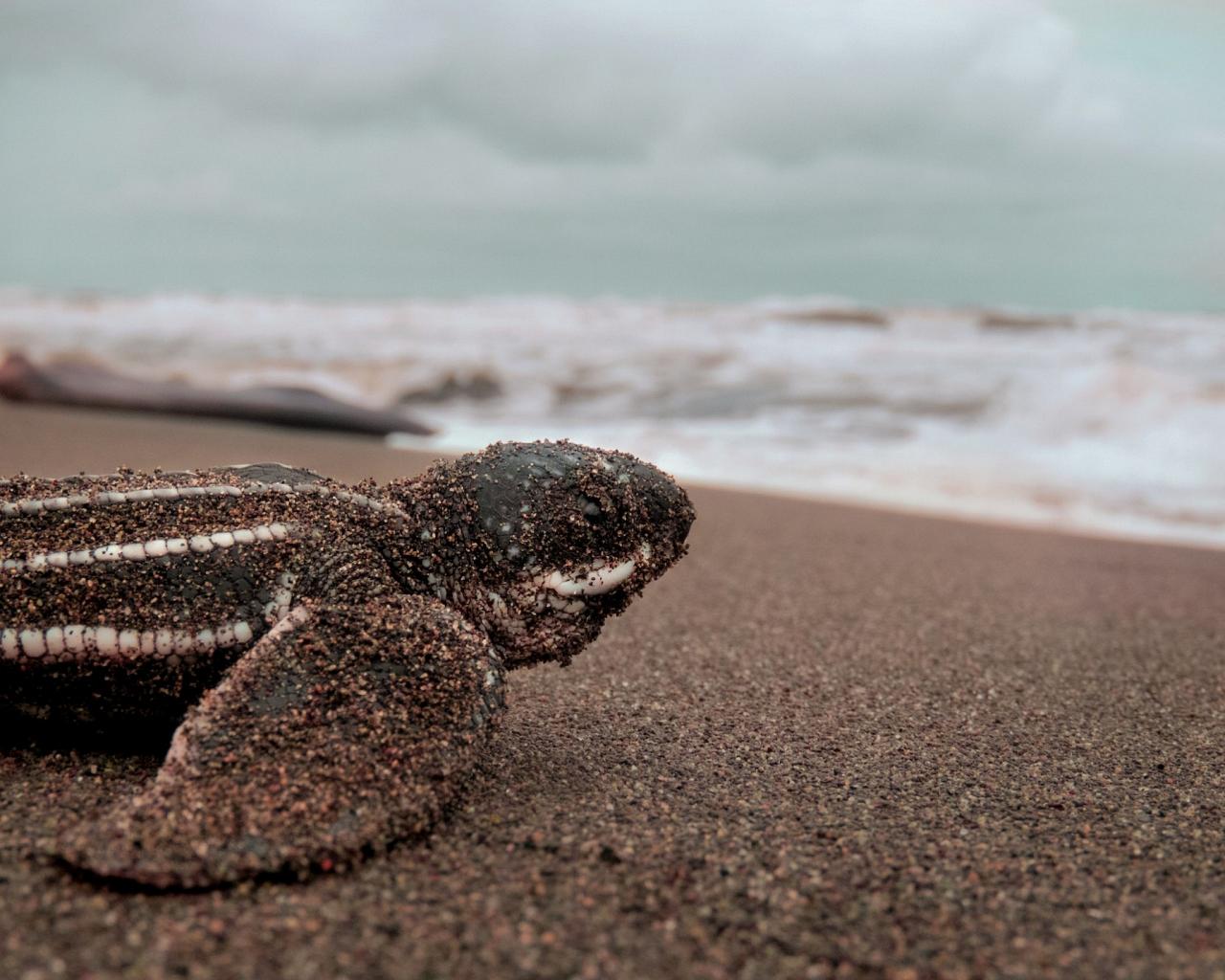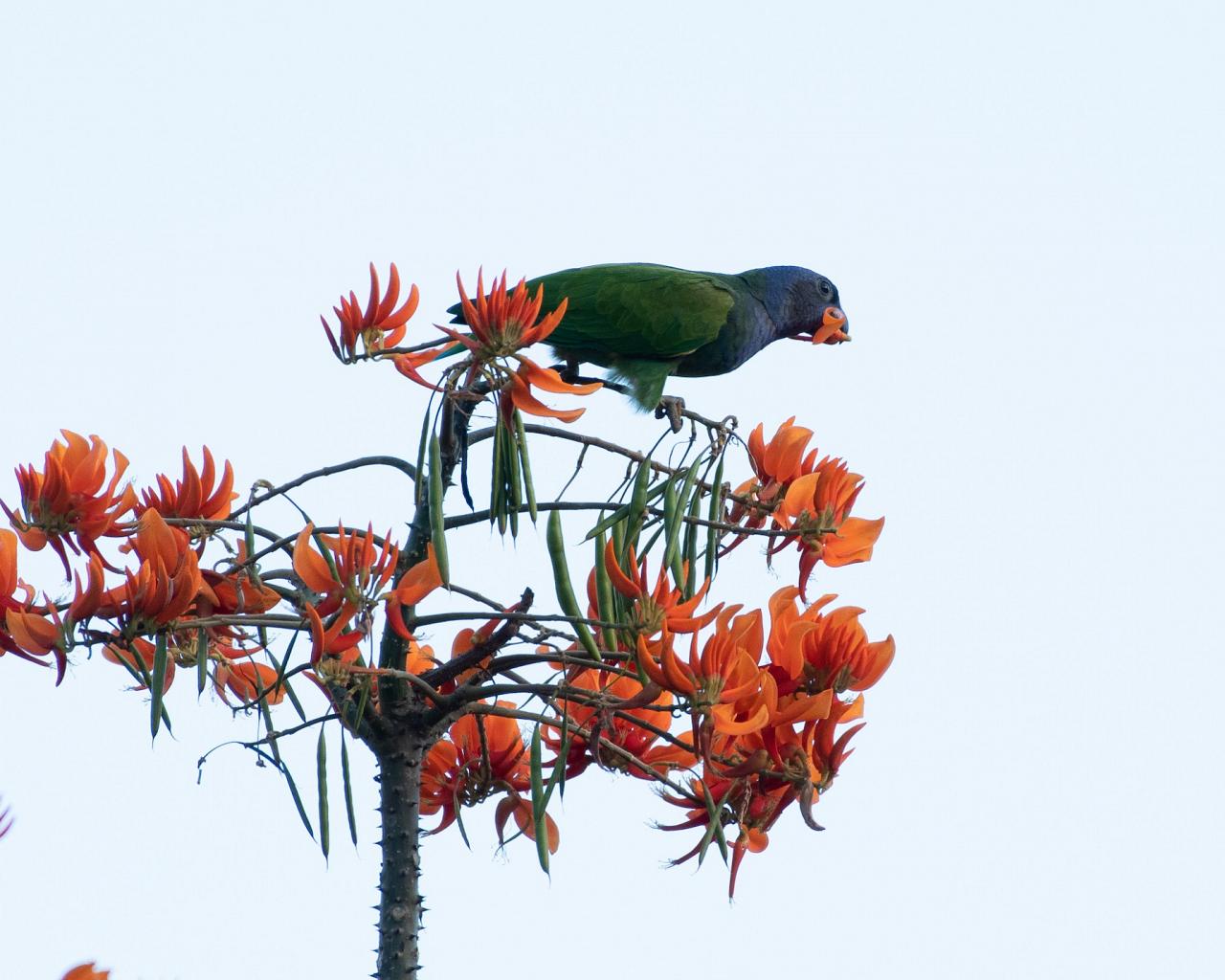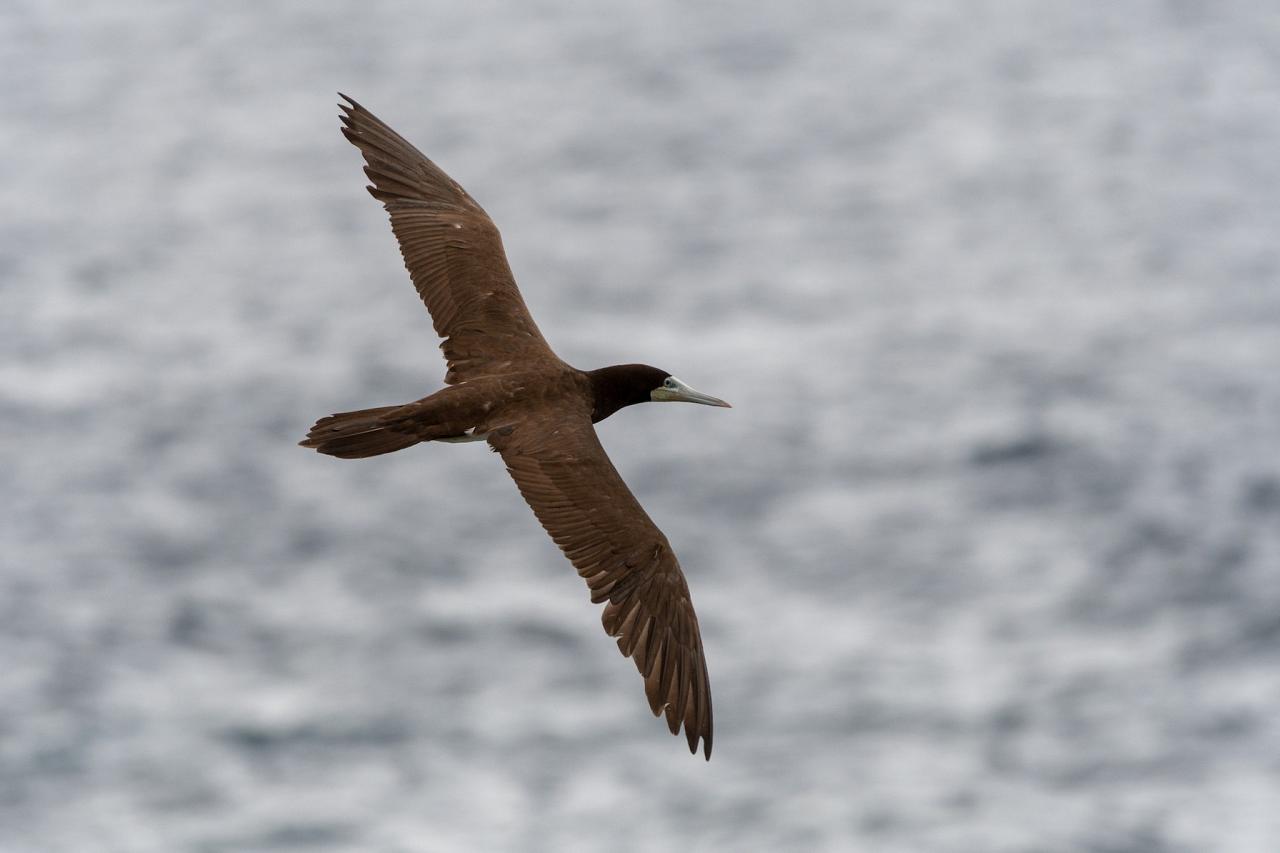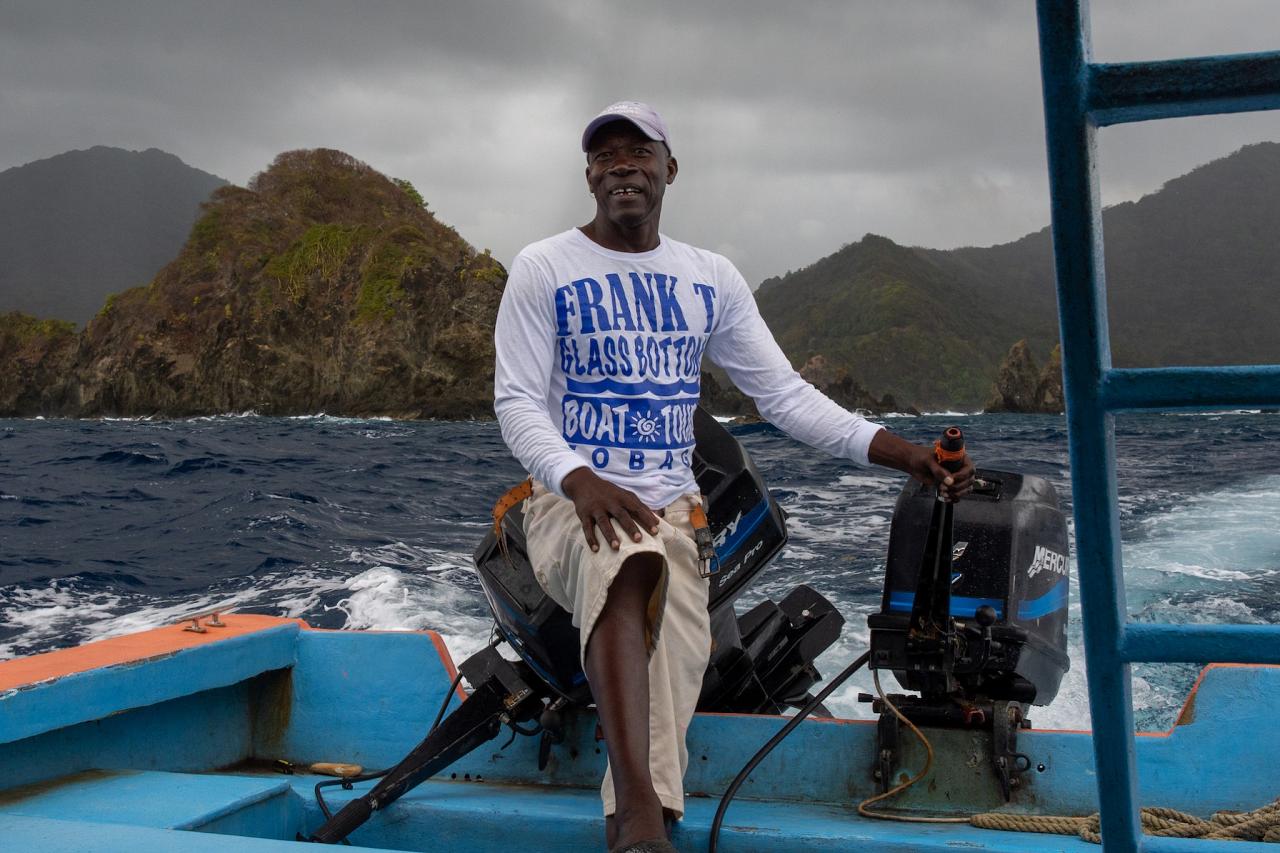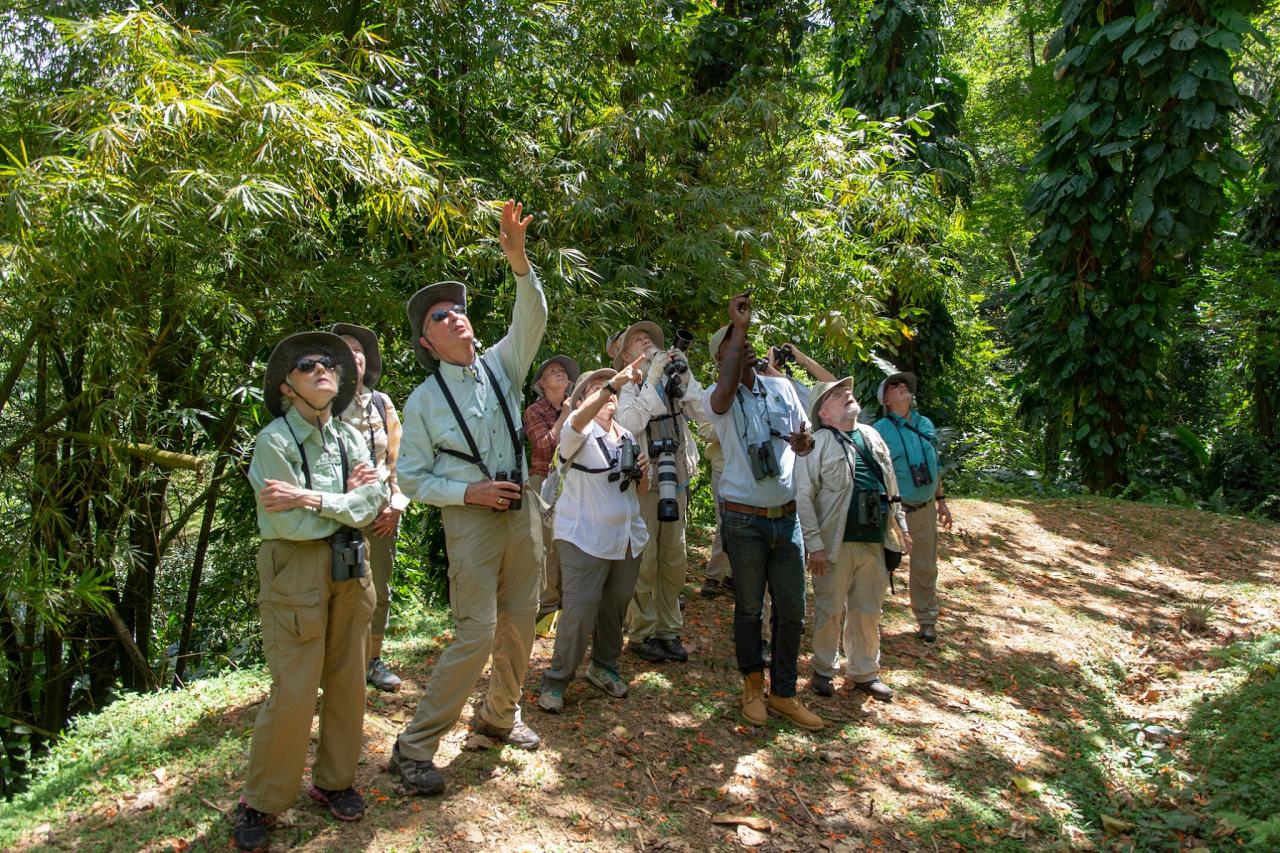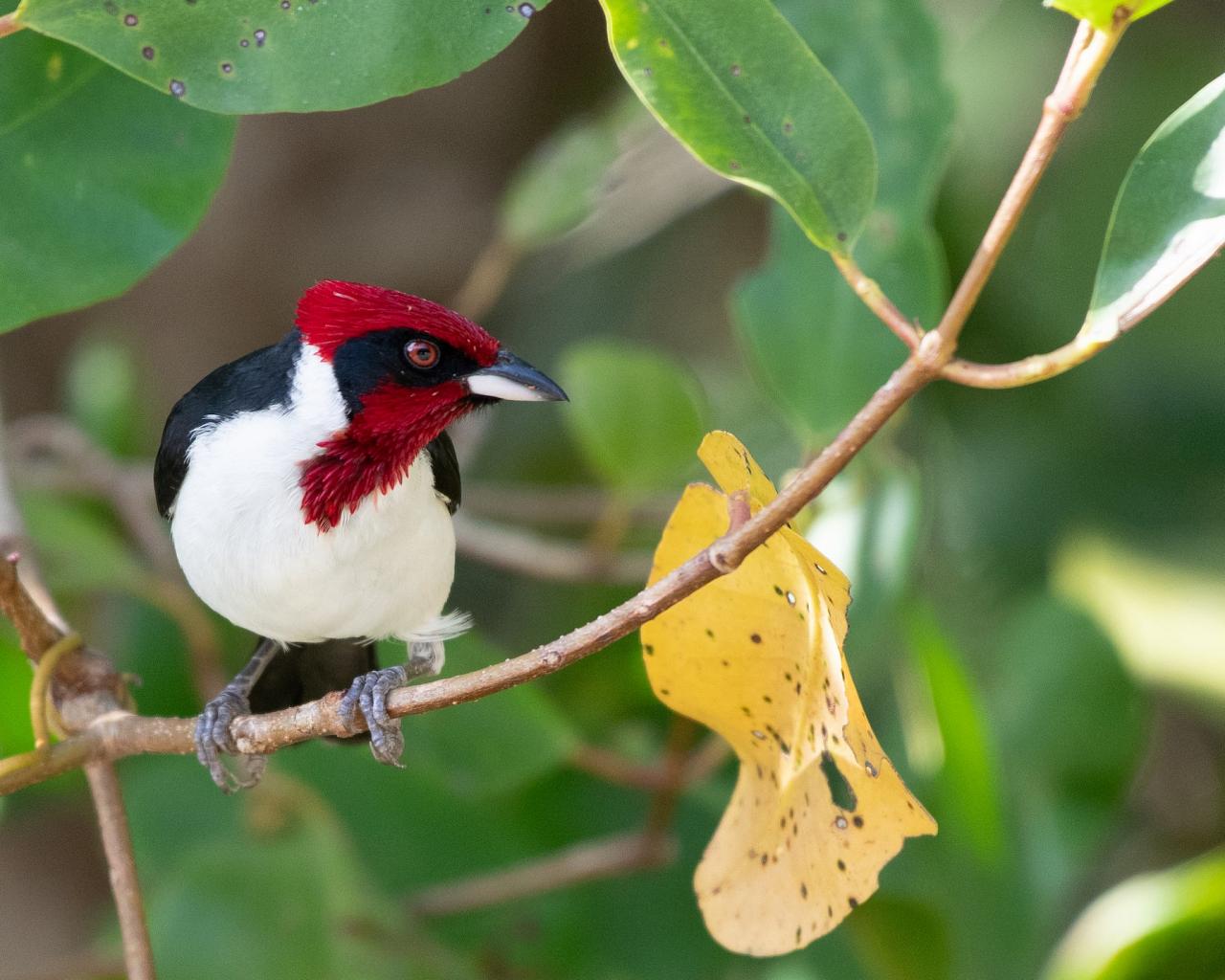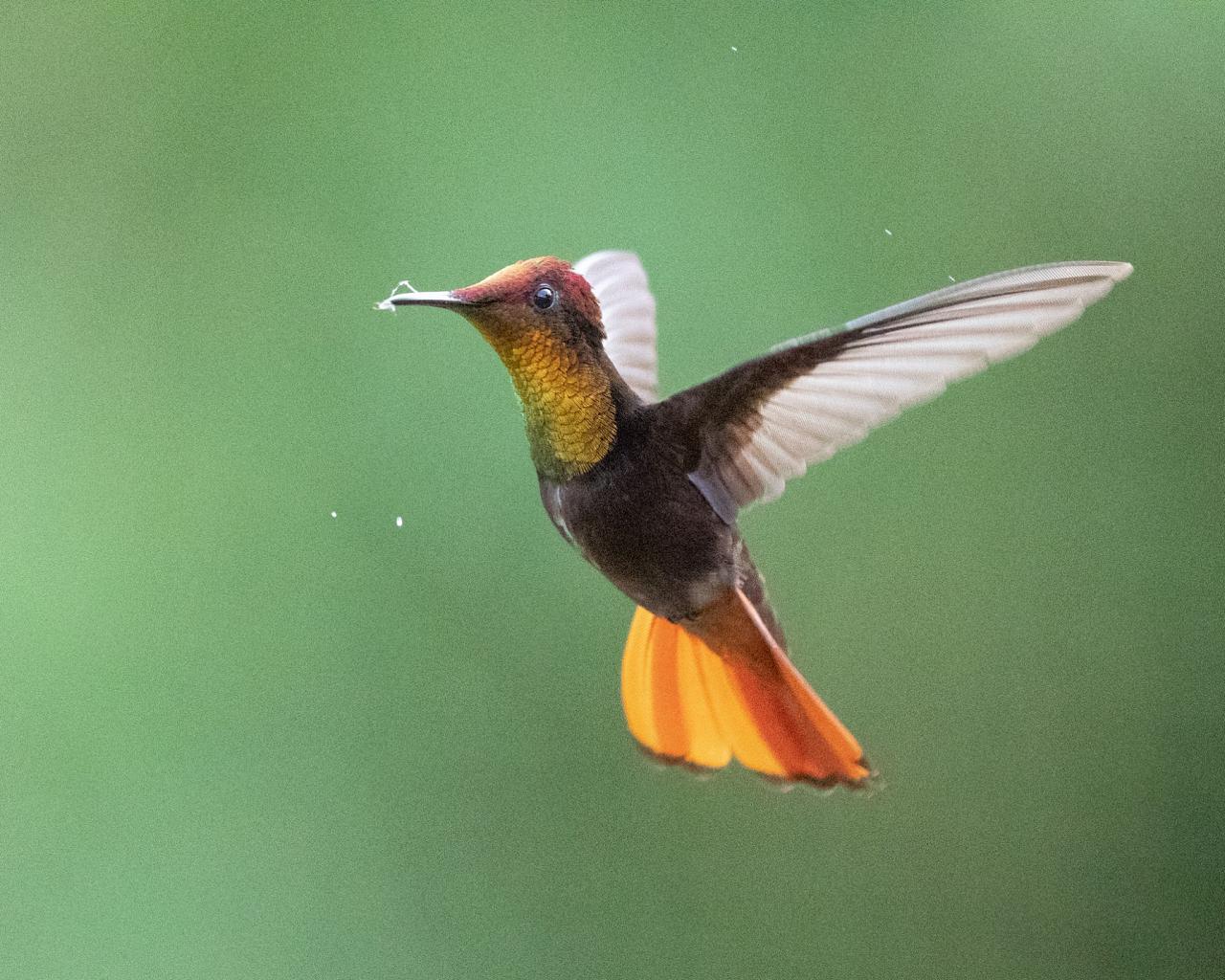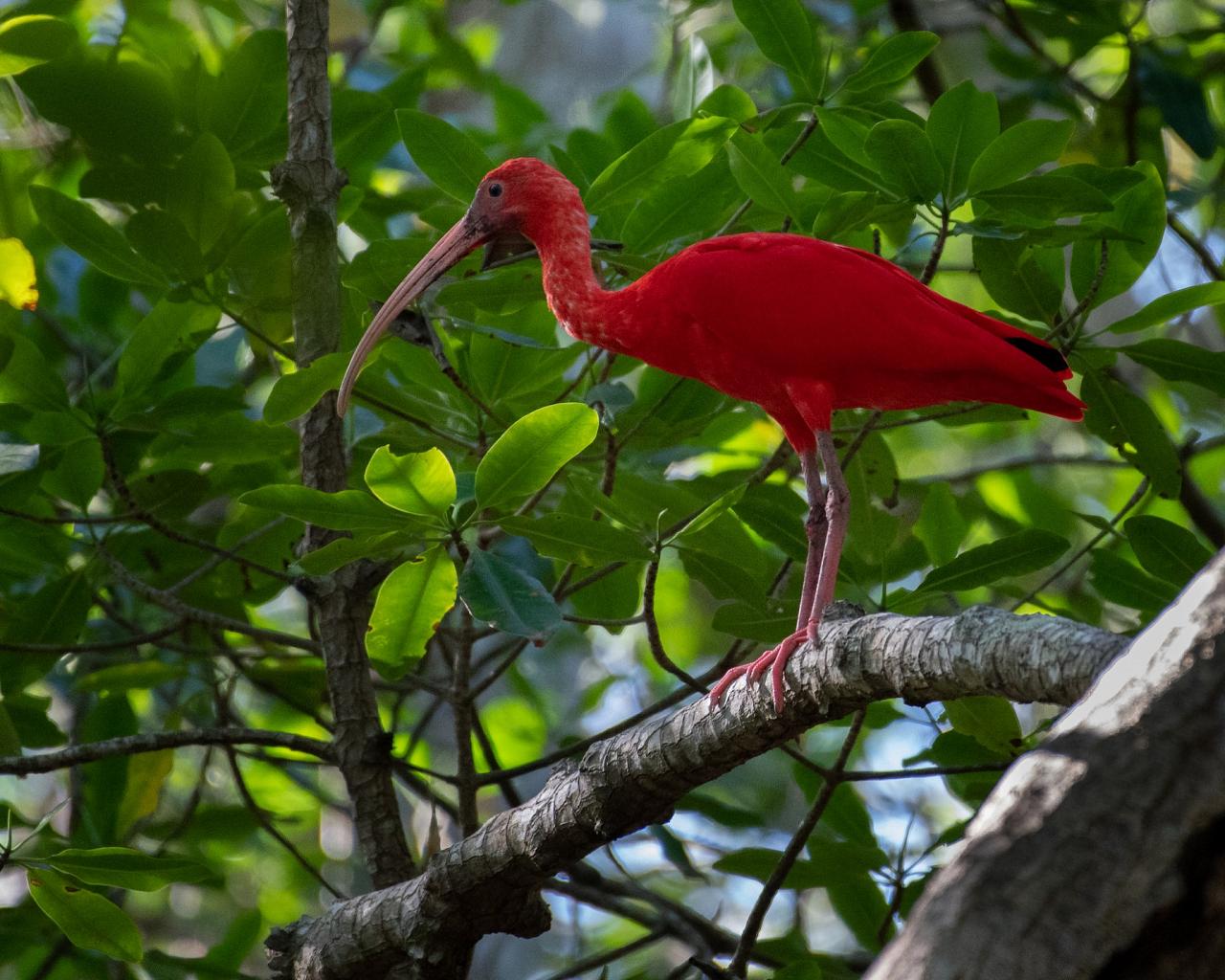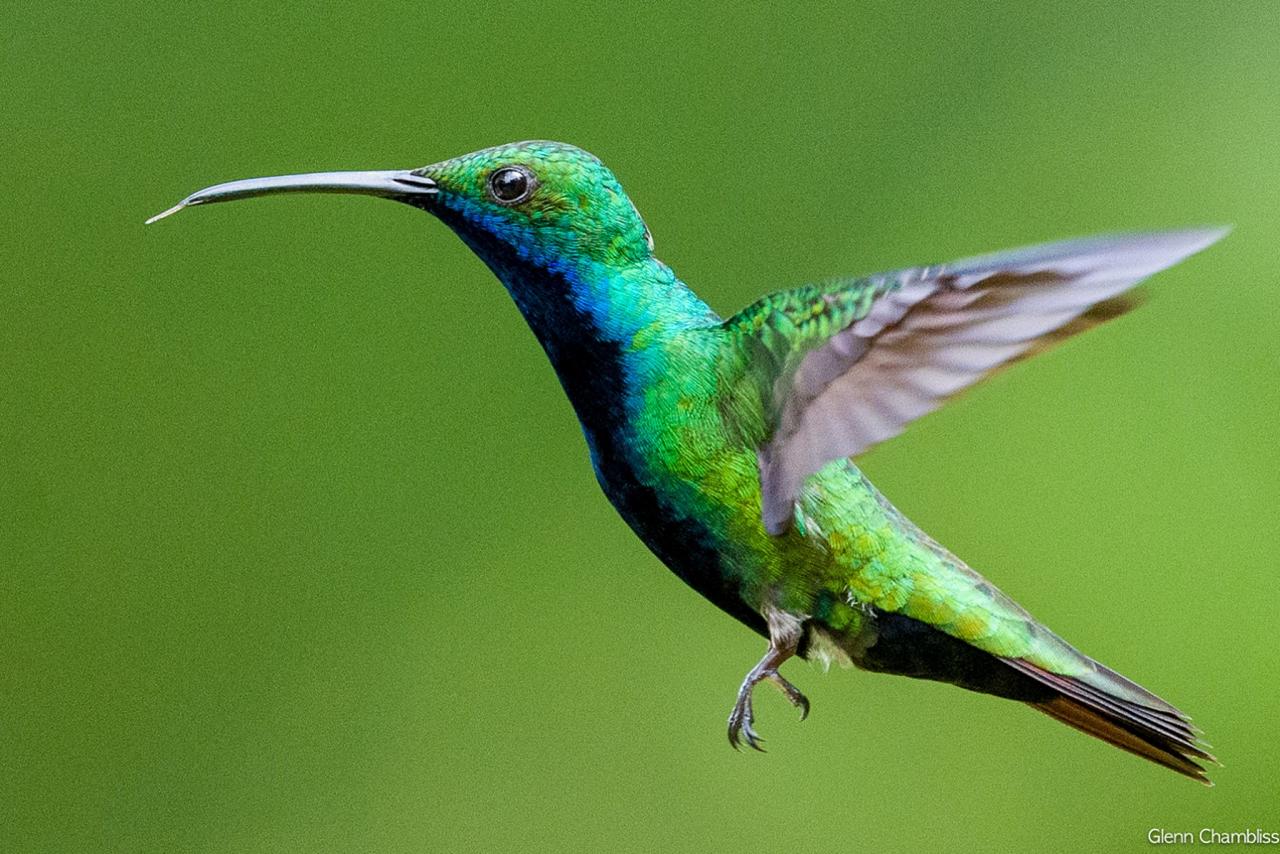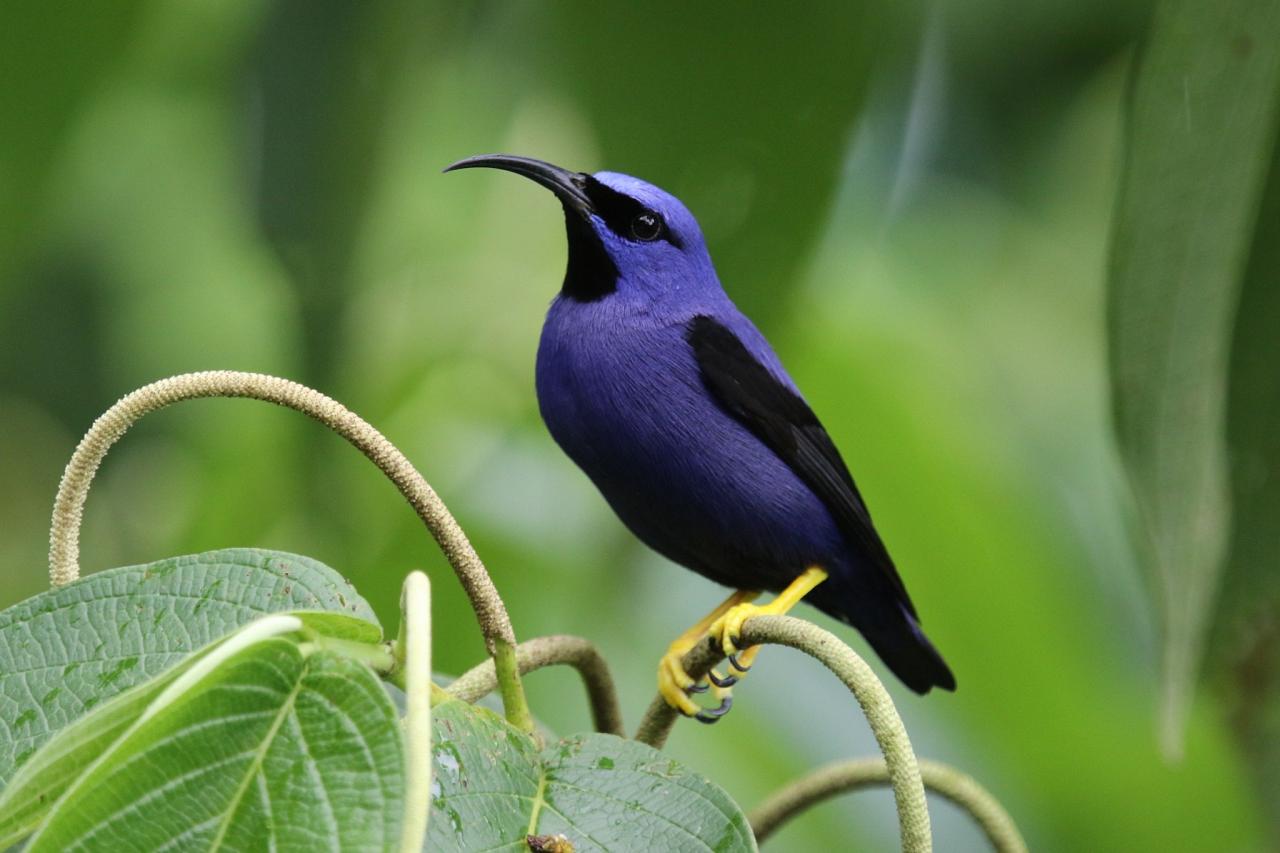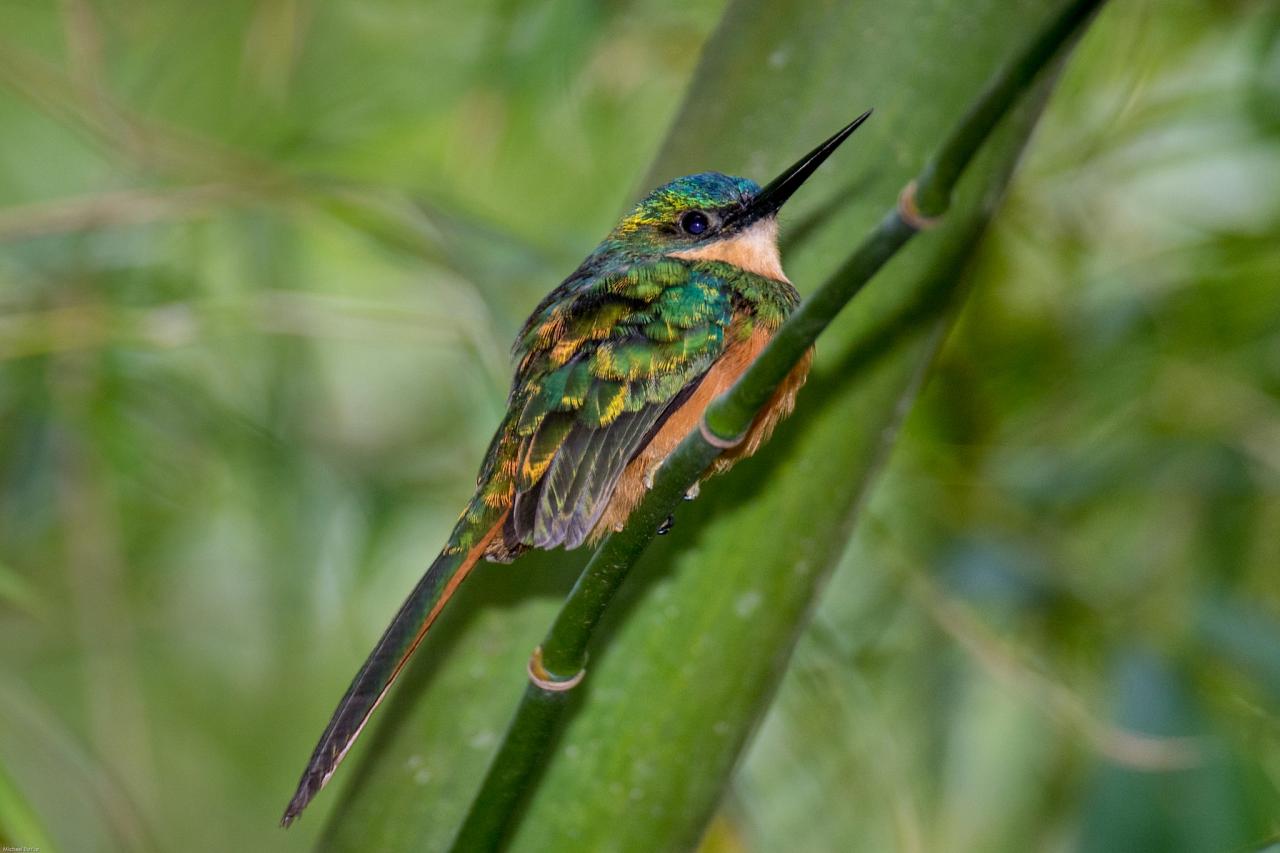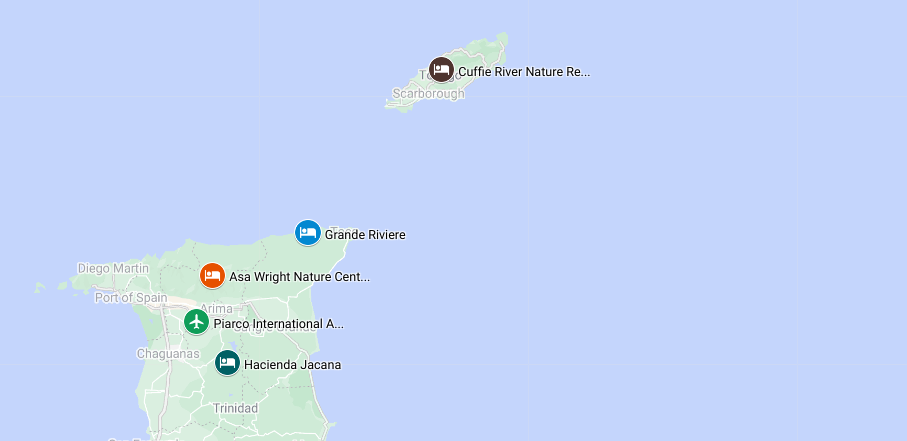- Overview
- Full Itinerary
- Photo Gallery
- Costing
- Travel Details
- Trip Reports
- Guide
- Map
- Know Before You Go
Experience Trinidad and Tobago and celebrate mom this Mother's Day, the best introduction to tropical birding possible, with a special tour to Asa Wright Nature Centre. Trinidad, with its proximity to Venezuela, offers a number of species not usually possible on an island (Caroni Marsh, with its daily Scarlet Ibis Spectacular, is an iconic destination in itself), while Tobago feels entirely different—classic Caribbean. Combined, these islands provide a variety of habitats that yield dramatic diversity. In many ways it feels like two vacations in one!
This is a true “great lodge” trip with time immersed in nature. We’ve booked a quiet week at the beloved Asa Wright Nature Centre, from which we base our field trips for the week. Relax and let the birds come to you—enjoy morning coffee and afternoon tea on the Centre's verandah. Explore the well-kept trails and even bird from the entrance road (easy walking). Enjoy the contrast of the mountains of the Northern Range and the best of tropical lowlands. Spend time with toucans, trogons, manakins, colorful tanagers, elegant seabirds, and more. See over a dozen species of dazzling hummingbirds including the tiny Tufted Coquette and the brilliant Ruby Topaz.
A Naturalist Journeys guide joins local experts with 7 or more participants. Please note we will do all activities outlined in this itinerary but may adjust day to day to be flexible to weather or birding opportunities. Our typical group size is 6-10 clients.
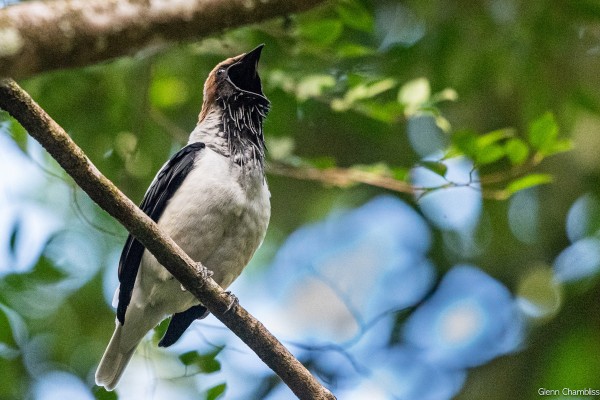
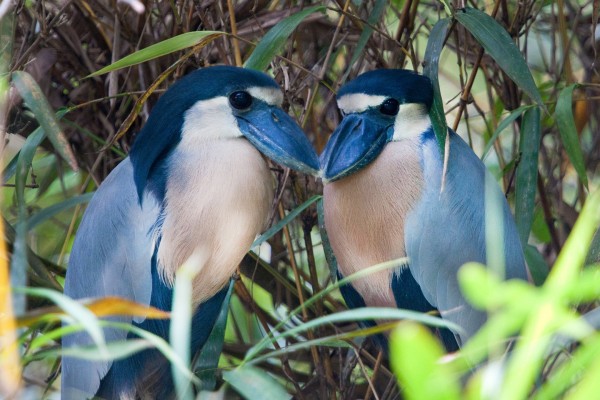
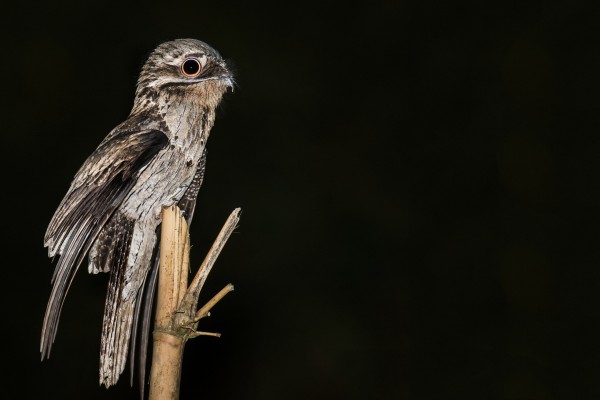
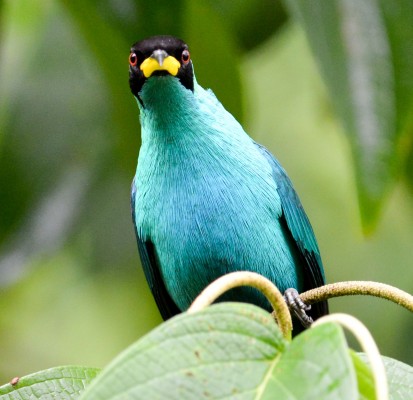
- "Our Trinidad & Tobago trip was simply marvelous. Jason Radix is a joy to work with. Dave Ramlal is an amazing guide & very kind person. His patience with my birding skills was much appreciated! Zolani Frank also has amazing birding skills & much patience! Desmond kept us chuckling as he found bird after bird! Andy’s jolly demeanor made the ride to the airport zing along. You have a wonderful group of employees & very special lodges on these islands. And the food- yum!" — 2023 Travelers
- "Great guides. Wonderful traveling companions. Terrific birds. The food was delicious. Got to taste authentic Trinidad food." — Loretta Selinger, 2023 Traveler
- "Amazing in every way possible. This is a trip that combines some of the best birding imaginable with careful, ethical planning and many encounters with the everyday life of Trinidad and Tobago. Afterward, I felt blessed to have been able to talk with people from wildly different backgrounds, both American and Trini. The meals are wonderful and virtually all local, everyday cuisines--no fast food here at all. The guides and hosts are tops in my book--helpful, knowledgeable, committed, and kind." — Chuck Anderson, 2023 Traveler
Tour Highlights
- Experience outstanding birding from the Asa Wright Nature Centre as our base for exploring the mountains, savanna, and mangroves of Central Trinidad
- Enjoy big vistas and the iconic Bearded Bellbird up in the mountains of Trinidad’s Northern Range
- Bird in varied habitats from savanna to mangroves, lowland forest to mountain terrain
- Dine in a local village known for making quality chocolates and great birding
- Discover intimate views and potential photos of birds at gardens in selected lunch stops, with brilliantly colored hummingbirds, honeycreepers, tanagers, toucans, and more
- Discover the enigmatic Oilbird roosting at Dunstan Cave in Trinidad’s Northern Range
- Witness skies turned crimson with thousands of Scarlet Ibis coming in to roost in Caroni National Park as you glide through mangroves on a quiet boat ride
- See the amazing spectacle of nesting Leatherback Turtles
- Find the tiny Tufted Coquette and other species of hummingbirds
- Tour Highlights on Tobago
- Arrive to a frenzy at Cuffie River Resort’s feeders, perfect for observation and photography and a great place to see the beautiful Ruby Topaz
- Enjoy creative tropical architecture; let the breeze be your ventilation in this peaceful mountain retreat
- Take a swim—from the pool watch Trinidad Motmot, Rufous-vented Chachalaca, and Orange-winged Parrot
- Marvel at dinner guests that may include (just outside) a White-tailed Nightjar or Common Potoo
- Visit Tobago’s historic Main Ridge Forest Preserve and Little Tobago Island with experienced, local guides, followed by a boat ride to land and observe seabirds on Little Tobago Island
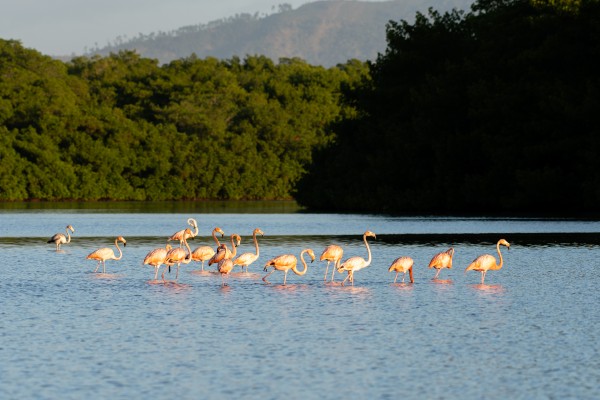

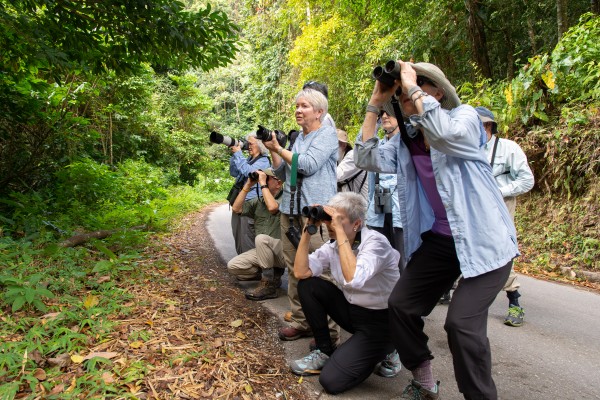
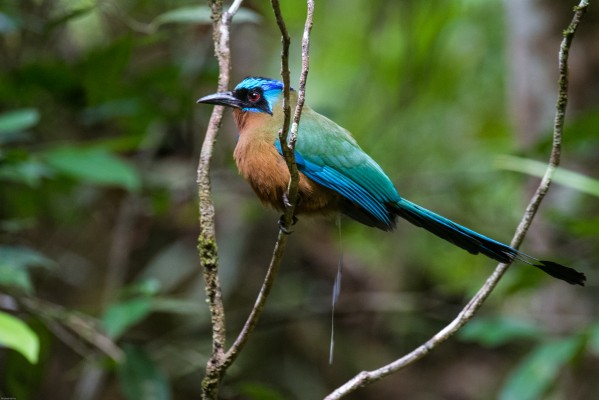
Trip Itinerary
Itineraries are guidelines; variations in itinerary may occur to account for weather, road conditions, closures, etc. and to maximize your experience.
Fri., May 9 Arrival & Welcome to the Asa Wright Nature Centre
Our guides meet all flights arriving at Trinidad’s Piarco International Airport in Port of Spain. Expect a warm greeting at the Centre, where the colors of the birds is vivid and hospitality is shared to make you feel welcome. Coffee and tea is served at 4:00 PM, Rum Punch at 6:00 PM, both accompanied by one of the most amazing bird shows of any eco-lodge in the world! Share dinner with other tour participants and guests staying at the lodge in the Centre’s cozy dining room.
In the evening, we walk the Centre’s paved driveway though lush overhanging forest, listening to night sounds and with luck, the call of Tropical Screech Owl. If your flight arrives late in the evening, you may wish to come in the day before so as not to miss anything. Or, despite the late hour, come on up and get settled, knowing you will wake up to the birds!
Accommodations at the Asa Wright Nature Centre (AWNC) (D)
Sat., May 10 Forty Species Before Breakfast | A Leisurely Day at AWNC
Morning begins with the raucous noise of the Crested Oropendola or the distinctive “boink!” of the Bearded Bellbird and a host of other exotic sounds. A first-time visitor might see 20 – 30 life birds among the 40 or more species often seen before breakfast! Treasure the rainbow of color right at arm’s length as honeycreepers and hummingbirds come in to feed, and colorful birds come to the fruit feeders—agoutis and huge tegu lizards patrol below.
Today is a perfect day to do what many long to do, spend a full uncharted day at the Centre! Photograph to your heart’s delight, walk with a naturalist to learn more about butterflies and tropical plants, log more tropical species from the verandah, sit quietly among a chorus of Bearded Bellbird on the Discovery Trail, and watch manakins dance on their leks. The Centre holds many treasures that take time to observe and today is the perfect time to do just that.
We spend the morning enjoying gifts from nature, watching and tallying up species that we see from the verandah. Lunch is often the big meal of the day and its sure to be wonderful!
In the afternoon, we can walk leisurely out the driveway to the entrance, an excellent route for spotting birds in trees that arch overhead. More adventurous walkers may want to return via one of the forest loop trails.
Enjoy rum punch and relax in the late afternoon on the beautiful verandah as the birds come to you. After dinner, we offer a night walk to discover even more wonders to come out after dark.
Accommodations at AWNC (B,L,D)
Sun., May 11 Oilbirds | Exploring Centre Trails | Mother’s Day Dinner
Happy Mother’s Day! Today is as leisurely as you like. After breakfast, we visit Dunstan Cave, one of Trinidad’s major colony sites for Oilbirds, a unique species in that it is a nocturnal, fruit-eating bird. This colony has been monitored for many years. Enjoy a chance to learn about their ecology and conservation. The trail to the cave is steep in some locations, so wear secure footwear, especially in wet conditions. We take it at a birder’s pace and if you are not up to it, feel free to enjoy free time on the verandah or grounds at your leisure.
The Centre is situated in a typical valley of Trinidad’s Northern Range. These sites have been traditional centers of coffee, cocoa, and citrus plantations and many of these plants are still maintained at the Centre. Natural second-growth has taken over and festooned the abandoned plantation vegetation with vines and a host of epiphytes. The whole effect is one of being deep in a tropical rainforest.
The afternoon today is free to allow you to relax or enjoy the trails on an afternoon walk if you like. Choose one of several trails that traverse this rich and diverse wildlife sanctuary with a chance to see species like Guianan Trogon, Channel-billed Toucan, Chestnut Woodpecker, White-bearded Manakin, Rufous-browed Peppershrike, and Turquoise and Bay-headed Tanagers. Or, take a dip in the natural swimming hole on one of the trails decorated year-round by ferns and wild tropical plants.
Birds and people both gather in time for the 4:00 PM tea (and cakes). Birding from the verandah of the Asa Wright Nature Centre as the day winds down is one of the world’s most pleasant and exciting ornithological experiences. Ruby-topaz Hummingbird, Tufted Coquette, Barred Antshrike, Green Honeycreeper, and Bare-eye Thrush are among the many species that are seen. Golden Tegu Lizard and Agouti are again busy below the verandah. 6:00 PM rum punch is next on the list. We enjoy a special celebratory Mother’s Day dinner tonight.
Accommodations at AWNC (B,L,D)
Mon., May 12 Birding the Northern Range from Blanchisseuse Road | Brasso Seco
Today’s scenic, day-long excursion takes us high into the Northern Range on the Blanchisseuse Road. We make frequent birding stops and then enjoy a local lunch and cacao demonstration in picturesque Brasso Seco. We then continue through the mountains to the village of Morne la Croix for afternoon tea and cakes (yum!) as we enjoy watching parrots head in to roost.
Today also offers the opportunity to examine the strange world of leaf-cutter and army ants, as well as the chance to photograph butterflies, orchids, and other tropical flora.
Accommodations at AWNC (B,L,D)
Tues., May 13 Aripo Savannah | Turtles at Matura
Today we bird the lower elevations and leave a bit early to get to our location in time for bird activity. A remnant of a once major lowland habitat, the seasonally wet Aripo Savannah is surrounded by sugar cane fields. Today we explore the tropical birds unique to this habitat, as well as the distinctive flora that has adapted to the savannah’s harsh conditions—alternating from wet to dry. Birds we can hope to see include Southern Lapwing, Yellow-headed Caracara, Red-bellied Macaw, Silver-beaked, Blue-gray, and Palm Tanagers, beautiful Saffron Finch, Red-breasted Meadowlark, Snowy Egret, and Little Blue Heron to name just a few.
We return to the Centre for lunch and some down time before embarking on an exciting evening adventure to experience watching Leatherback Turtles at Matura Beach. March through July, these massive, lumbering turtles come ashore each night to lay their eggs. In May, we should be lucky enough to also watch hundreds of just-hatched baby turtles erupt from their sandy nests and shift their way to the sea. These darling hatchlings have a long road ahead to survive long enough to reach sexual maturity … but, those that do will come back to this exact beach to lay their eggs year after year. With your rum punch and hot dinner in tow, enjoy what nature reveals after dark.
Accommodations at AWNC (B,L,D)
Wed., May 14 Orange Grove Estate Birding | Caroni Marsh & the Spectacle of Scarlet Ibis
We take our time getting up and enjoying the birds at the Centre before embarking on a field trip to bird at the Orange Grove Estate. We work our way through wetlands and agricultural fields, keeping our eyes peeled for gallinules and possibly even Long-winged Harrier. Bright and beautiful Yellow-hooded Blackbirds should put on a show, while striking Pied Water Tyrant should be calling.
This evening we watch the most vivid show of rich magenta displayed on the wings of thousands of Scarlet Ibis coming in to roost! The Scarlet Ibis was recently portrayed on the cover of a book about the world’s most remarkable birds. This field trip has long been a highlight of Trinidad’s many wonders.
We board a small boat, reserved for our group, to explore a very specialized mangrove forest that contains several genera and species of mangroves, showing classic examples of plant adaptation in this unique brackish water community. We seek out some of its more specialized denizens — Neotropical Cormorant, Anhinga, Striated Heron, White-cheeked Pintail, Large-billed Tern, Pied Water-tyrant, Bicolored Conebill, and Red-capped Cardinal. Our day ends with the spectacular flight of Scarlet Ibis returning to their mangrove roosts at dusk, truly one of the world’s most dramatic natural moments.
We bring the rum punch along to celebrate, and as we return to the boat dock we search the mangrove-lined channels for the mysterious sounding Common Potoo. Return to the Centre for dinner a bit later this evening, still aglow from your fabulous sightings.
Accommodations at AWNC (B,L,D)
Thurs., May 15 Nariva Swamp
Today we have the chance to see more of the country and the special birds of Trinidad’s East Coast and the Nariva Swamp, the largest freshwater herbaceous swamp on the island. This field trip starts with a stop in the morning in the lowlands where may find White-headed Marsh-Tyrant, Pied Water-Tyrant, Savanna Hawk, Bat Falcon, Red-breasted Blackbird, Southern Lapwing, and possibly a flock of Green-rumped Parrotlet.
The east side of Trinidad hosts an ecosystem very different from that of Caroni on the west side. Here, where the Nariva River reaches the sea, freshwater environments are comprised of herbaceous swamp and swamp forest, dotted with a few patches of mangroves such as the area around Bush Bush Creek. Along the edges are “palm islands,” where the tall Moriche Palm is common. Here too we see a unique mangrove community, made up primarily of the stilt-rooted rhizophora mangrove, which often reaches a height of 80 feet. Limpkin, American Pygmy and Green Kingfishers, Black-crested Antshrike, Green-throated Mango, and a mix of other species can be found.
We pass Manzanilla Beach with its swimming beaches and picnic pavilions, and south of here travel through long lines of coconut trees, often with Yellow-headed Caracara or possible Pearl Kite perched in them. A mangrove area nearby can prove fruitful for the more elusive species such as Silvered Antbird, Bicolored Conebill, and Least Bittern. An expansive open area with small ponds and flooded fields known as the Melon Patch hosts Wattled Jacana, and possible (rare) Pinnated Bittern.
Back at the Centre we enjoy a final dinner together, recounting highlights of our journey.
Accommodations at AWNC (B,L,D)
Fri., May 16 Departures
Depart at your leisure today, the Centre arranges airport transfers according to your flight time. If you have a late flight, enjoy the bonus of another day in birding paradise! We can make recommendations if you plan to spend time on Tobago. (B)
Cost of the Journey
The cost of this journey is $4290 DBL / $4725 SGL, per person, from Port of Spain, departing Tobago Crown Point. Tour cost includes all accommodations; meals as specified in the itinerary, group airport transfers, professional guide services, local park and other area entrance fees, and miscellaneous program expenses. The deposit for this tour is $750 per person. Cost does not include transportation to Trinidad or from Tobago, or items of a personal nature like laundry, telephone charges, porterage, maid gratuities, or beverages from the bar.
Travel Details
Please plan to make air travel plans only after the minimum group size has been met. We will send you a confirmation email as soon as the trip has been confirmed.
Arrival Airport: Port of Spain, Trinidad (POS)
Arrival Details: Please plan your flights to arrive May 9, 2025 at your leisure.
Departure Details: Plan your flights to depart May 16, 2025 at your leisure.
Travel Tips: For your departure, the first flight off Tobago is approximately 7:00 AM on Caribbean Air. It is a 25-minute inter-island flight. If you are on Caribbean Air all the way home, you can connect with a 9:00 AM Caribbean Air flight onward. They do not transfer luggage so for all other carriers you may not book international flights out before 10:00 AM. You need time to collect luggage at POS and check back in with your outbound carrier. It is important to also book the Tobago flight back to Trinidad on Caribbean Air (easy to do the airline website – flights run at least hourly). Note that making flights is time sensitive to get choice flights. Time this booking to work with your international flight – allow three hours. For example, if you have a 2:00 PM flight, leave Tobago not later than 11:00 AM. If you have an 11:30 PM flight, you can stay on Tobago, enjoy the day, purchase your lunch at Cuffie River and go back after 6:00 PM. The TAB to POS flights run every hour.
Items of Note
Pace of the Journey & Guides
This is an itinerary focused on birding with some nice cultural elements added in. At all locations, the lodges are pleasant places to bird and explore at leisure if you do not want to participate in the trips away. To fully participate you should be able to get in and out of vehicles multiple times a day with ease, walk 1-3 miles over uneven terrain, and have a flexible attitude towards the weather – this is a tropical rainforest so there will be a need to adjust birding at a time to let rains pass by. We support local guides! With groups of less than 7 we use our local expert guides who we have worked with for many years. With 7 – 10 we add a Naturalist Journeys guide.
Browse below for trip reports and species lists from past versions of this and other tours from this destination.
Trinidad & Tobago
- June 2011
- December 2014
- February 2015
- March 2015
- March 2017 (Trinidad Only)
- January 2018
- December 2018
- January 2020
- March 2020
- December 2022
- March 2023
- April 2023
- June 2023
- November 2023 (Thanksgiving Trip)
- December 2023 (Christmas Tour)
- January 2024
- February 2024
- April 2024
- June 2024
-
Kelly Vandenheuvel

Kelly has worked with Naturalist Journeys since 2011. She assists our lead guides on trips to Alaska, the Pacific Northwest, Death Valley, the Eastern Sierras, California’s Central Coast, Yosemite National Park, Yellowstone and Grand Tetons, Utah’s National Parks, Belize and the Caribbean islands of Trinidad & Tobago. Kelly enjoys the outdoors, travel, nature, wildlife, and working with people. Kelly is a licensed wildlife rehabber and educator for Pacific Wildlife Care in San Luis Obispo county, and is a founding member of the organization. She is also the Owner/Broker of Central Coast Property Sales. She and her husband Art own a ranch in Cayucos on California’s Central Coast, where
they live with their large menagerie of birds and mammals, both wild and domestic. When not traveling, Art and Kelly welcome guests to find peace and quiet on their ranch in their B and B guest house.Other trips with Kelly Vandenheuvel
-
 Costa Rica Birding & NatureFebruary 4 - 11, 2025, w/Pacific Coast extension
Costa Rica Birding & NatureFebruary 4 - 11, 2025, w/Pacific Coast extension -
 Costa Rica Birding & NatureMarch 5 - 12, 2025, w/Pacific Coast extension
Costa Rica Birding & NatureMarch 5 - 12, 2025, w/Pacific Coast extension -
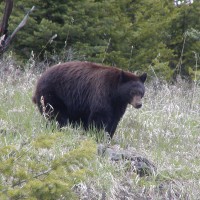 Yellowstone: Birds, Bears & WildlifeJune 5 - 11, 2025
Yellowstone: Birds, Bears & WildlifeJune 5 - 11, 2025 -
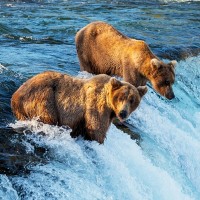 Alaska Sampler Anchorage, Homer, Seward & Kenai FjordsAugust 11 - 19, 2025
Alaska Sampler Anchorage, Homer, Seward & Kenai FjordsAugust 11 - 19, 2025
-
Essential Information +
Pace & Protocols +
Packing List +
Suggested Reading List +
Useful Links +
Photo credits: Banners: Scarlet Ibis, Hugh Simmons Photography; Blue-chinned Sapphire, Sandy Sorkin; Blue-gray Tanager, Glenn Chambliss; Little Tobago, Hugh Simmons Photography; Bearded Bellbird, Glenn Chambliss; Boatbill Heron, Tom Dove; Common Potoo, Mike Boyce; Green Honeycreeper, Sandy Sorkin; American Flamingo, Hugh Simmons Photography; Blue Waters Inn, Hugh Simmons, Group Trinidad, Hugh Simmons; Trinidad Motmot, Mike Boyce; Trinidad Piping Guan, Mike Boyce; White-tailed Sabrewing, Dave Ramlal; Leatherback Turtle, Howard Topoff; Smooth-billed Ani, Peg Abbott; Mt. Plaisir, Janet Metzger; Cuffie River, Bud Ferguson; Lineated Woodpecker, Dave Ramlal; Ruby Topaz, Dave Ramlal; White-necked Jacobin, Steve Wolfe; BWI Franks boat, Lynn Tennefoss; Blue-backed Manakin; Doug Greenberg; Brown Pelican, Hugh Simmons; Scarlet Ibis, Hugh Simmons; Black-throated Mango, Faraaz Abdool; Blue-headed Parrot, Hugh Simmons Photography; Brown Booby, Hugh Simmons Photography; Frank Little Tobago, Hugh Simmons; Group in Trinidad, Hugh Simmons; Masked Cardinal, Hugh Simmons Photography; Ruby Topaz, Hugh Simmons Photography; Scarlet Ibis, Noel Snyder; Black-throated Mango, Glenn Chambliss; Purple Honeycreeper, Peg Abbott; Rufous-tailed Jacamar, Mike Boyce.






